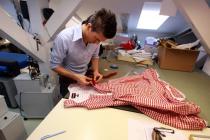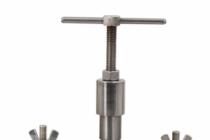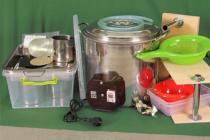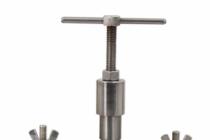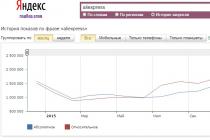The business idea of producing hard cheese at home is consistently profitable and does not require large investments. This fact is due to many factors, which are all described in this article. The main ones are:
- Affordable equipment for home business.
- Possibility to produce a wide range of cheese varieties at home on the same equipment.
- There will always be demand for all kinds of cheeses.
- Even a novice in business can establish a sales market.
- The profitability of some varieties can exceed 200%!
Anyone can learn how to make cottage cheese or hard cheese at home. Over time, experience will appear and the home cheese maker will be able to produce elite varieties of this most useful dairy product.
Cheese production as a business: mini-workshop

Mini-cheese making as a business has several advantageous business cases. In general, the estimated profitability of production is not difficult to calculate. If you buy milk in rural areas from the population at $ 0.25 per 1 liter. With a yield of 10% from 100 liters, we get 10 kg of hard cheese, the price of which starts at $ 8 per 1 kg. And that: $8*10kg = $80 of income - ($0.25*100l.) = $55 of dirty profit. Making cheese at home is especially beneficial in rural areas. Where there are minimal (or no) transportation costs for the delivery of milk. Consider the profitability of a business and a cheese production line in numbers:
- The yield of the finished product during cheese making depends on its variety: 10% hard cheeses; 15% semi-solid; 20% cottage cheese and soft cheese varieties. But with a steam approach and the use of a container for receiving milk, the yield can be significantly increased (this will be described below).
- The cheese takes 1.5-4 hours to boil. This feature of the technology has a positive effect on the productivity of home production. Indeed, it is realistic to perform 3-4 brews per day.
- On the same equipment it is possible to produce any kind of cheese products, with the exception of some aesthetic varieties.
- You need a room for storing cheeses with good ventilation and the ability to maintain temperatures from +4 to +12 degrees. Areas of 10-15 sq.m. will be quite enough.
- The main thing you can’t do without is without a cheese maker. Its price starts from $500 for 10 liters of brew. The most popular small business cheese makers use 25 liter cheese makers costing $4,000. The country producing the best cheese makers is Italy. We recommend paying attention to the inexpensive Italian manufacturer Sfogi. Although you can buy a budget version of the domestic manufacturer Minicheese, which offers 60-liter cheese makers at a price of $3250.
The home production line can be gradually equipped with additional equipment to increase the profitability and productivity of the line.
Equipment for the production of cheese at home

The cheese line is by no means limited to home conditions. It can only consist of basic equipment. But over time, it is desirable to acquire auxiliary equipment. A mini-cheese factory can be assembled from the following equipment:
- Cheese cooker with a heating element with a power of 1.5 kW (quite acceptable for domestic conditions). It must be able to connect to running water. For precise control of temperature regimes, the cheese maker is equipped with a special thermostat with a software control unit.
- Milk sterilizer.
- Colander for filtering grain-like mass.
- Food grade plastic molds.
- Cylindrical weights weighing 5 kg for pressing semi-hard cheeses. Or a press for the production of hard cheeses.
- The container for salting is a container made of food grade stainless steel (not magnetic).
- Shaping table and shelving in neutral wood (eg linden).
Auxiliary equipment allows you to increase the productivity of the cheese complex. This includes:
- Milk cooler.
- Food grade plastic container for draining a semi-annual product.
- Special container for the selection of whey.
That's all! It is important to note that the equipment of this type of production does not require special operating conditions and careful maintenance. No additional costs for preventive or repair work are needed. The cheese cooker and related devices will last a long time, reliably and efficiently. Bought once and forgot about operating costs.
Cheese production technology at home

Home conditions allow the production of many types of cheeses. The production technology of each type is different, despite the fact that it works on the same equipment. Consider the basic production technology with the right approach to increase productivity and profits in the cheese business. The entire production cycle consists of several stages:
- Sterilization of fresh milk.
- Preparation. All milk is divided 50% to 50%: the first part is immediately sent to the cheese maker and pasteurized at a temperature of +68 degrees, after which it is immediately cooled to +38 Celsius. The second part is cooled in the cooler to a temperature of +4 degrees.
- Cooking. Rennet is added to the chilled part. A little about the intricacies of cheese making technology. Rennet is obtained from the stomachs of calves that ate only milk. This enzyme in the calf is produced by the glands of the abomasum (4th section of the stomach). The enzyme helps calves digest milk. And when making cheese, it contributes to the ideal coagulation of milk. Rennet is sold in powder form. It should be added to milk very carefully: 1 gram of enzyme per 100 liters. After folding, the enzyme itself does not remain in the protein, but goes into the curd. When everything is ready, the milk is poured into the cheese maker for gradual maturation until completely curdled. The set temperature for curdling milk directly depends on two important criteria: cheese varieties (hard cheeses require a higher temperature and a shorter cooking time); percentage of fat in milk.
- Basically, the temperature range during cooking is in the range of 28-36 degrees. Below the optimum action of the enzyme (that is, below the body temperature of the calf +38.5 degrees)! This allows you to avoid the rapid compaction of the condensed mass and start the process of accumulation of lactic acid microflora for 1.5-4 hours (depending on temperature).
- Formation of curd. When the milk has curdled, and the cheese mass has separated from the whey, it should be broken into pieces of certain fractions. Here again there are technological nuances. If a semi-hard cheese is produced, which has a short ripening time, the curd fractions are the size of a walnut. For hard cheeses, you need to grind the mass to the size of a hazelnut. For elite varieties, the fraction can be crushed to the size of a corn kernel. Next, the cheese grain is sent to the molds under the press. If we make semi-hard cheese, then it should be pressed with weights of 5 kg. In both the first and second cases, pressing occurs with regular turning of the cheese head. After the cheese has firmed, it should be placed in a container with brine (water and kitchen salt). After aging in brine, the cheese heads are sent to wooden racks for maturation. The product ripening room must have good ventilation and a temperature of +4 to +12 degrees (depending on the variety you produce).
Helpful advice!!! Whey after cooking should not be poured. And you can send it back to the cheese factory, add 2 liters of milk, a little apple cider vinegar and warm everything up to a temperature of +92 degrees. As a result, we get a wonderful and appetizing cottage cheese, which is already ready to bring the first profit!
Varieties of the most useful dairy product

Cheese in any form of any variety will always be in demand. The cheese factory is a stable business. Conventionally, all cheeses can be divided into two main categories:
- Rennet. The production technology is based on the use of rennet. This includes cheese varieties: hard (Swiss, Dutch, Russian); semi-solid (Roquefort, Latvian); soft (Slavic, amateur).
- Sour-milk. According to the technology, milk coagulation occurs with the help of fermentation with special starter cultures. Examples of sour-milk cheeses: brine (sulguni, brynza, Imeretinsky, Adyghe, mozzarella); all kinds of cottage cheese (brunost, mozzarella, homemade).
It is worth noting that there are also mixed cheeses such as Faeta.
Each category and type can be further divided into subcategories and subspecies. Over time, you will become an expert in the cheese industry and will know more about cheeses than anyone else. It is important to note that in this business idea, the range of products can be made immensely wide on the same equipment. Produce, sell and earn!
Cheese contains the main trace elements in an easily digestible form

Cheese is a tasty and healthy, high-calorie protein product with great nutritional value. For many centuries, people have been engaged in the home production of cheeses of various types. Cheeses contain many useful substances necessary for the human body in an easily digestible form:
- proteins;
- fats;
- amino acids;
- peptides;
- Salt Sa, R.
Therefore, in the diet of every person, cheeses have forever won a place among the main food products. Cheese is used in almost all dishes and culinary recipes prepared in restaurants. The level of demand for cheese reached up to 40 kg. per year per person and continues to grow. When organizing home-made cheese production, only a lazy person will not be able to establish a sales market. From one raw product - milk, you can get many types of cheese products. In the functioning of this type of business, different cheeses have their own purpose and advantage. Consider three types of cheeses that bring three types of profit to a home business:
- Hard cheeses are not demanding on special storage conditions and have a high price. They can last for months (and some varieties - for years) in a ventilated room with a temperature of +12 degrees.
- Cottage cheese is a perishable product, but has the advantage of quick preparation. And ready for sale the next day after preparation. Naturally, you can extend its shelf life with the help of a refrigerator.
- Semi-hard cheeses are balanced advantages and features of the previous two types. Semi-solid varieties cook faster than hard ones and keep better than cottage cheese. They also expand the range, which allows you to increase the percentage of sales and increase profits from sales of finished products.
These benefits across products allow businesses to respond flexibly to any market conditions. You can build both short-term and medium-term home business development strategies. The right basement filled with hard cheese is a whole bank with deposits that brings a stable profit. It is important to note that for the production of a wide range of different types of products, one main product is required as a raw material - milk. Moreover, the equipment used is the same (with the exception of some varieties - parmesan, etc.). The only difference is the recipes and cooking technologies.
A profitable type of business in Russia is the production of cheese. This useful product will always be in guaranteed demand, as it is an important part of a healthy diet for every person. The cheese business can become a promising, sought-after business. This became especially relevant in the context of sanctions, when the Russian government restricted the import of these products from abroad.
Many entrepreneurs start this business already having the necessary knowledge and experience. They know many of the nuances and features of this production process. Others start their cheese making business from scratch.
Creating a business plan
The first step in starting a business should always be writing a solid business plan. It establishes the main directions of all your further actions in order to develop production. This document makes it possible to determine the size of the initial financial investment, formulate the correct assortment, correctly think over the pricing policy, plan the volume of goods produced and the possibility of its sale, predict consumer demand, and identify problems that may arise.
During the development of a business plan, you should determine strategic priorities in pricing, as well as consider searching for a niche in the sales market. To do this, you need to study the consumer demand for this product on the market in all its segments. Initially, the sale of cheese can be carried out in the region where the enterprise for its production is located. Later, when volumes are increased, it is possible to expand the sales market.
Registration of permits
It should be borne in mind that in order to open cheese production as a business, it is necessary to issue numerous permits, including obtaining certificates of various kinds.
First of all, you need to get the main document giving the right to conduct business - a registration certificate. You will receive all permits from the relevant authorities.
Product range
You need to decide the main question: will your company produce new varieties of cheese products or well-known, in demand. Your choice will determine the business development strategy.
Given the manufacturing process, natural cheeses are classified into fermented milk and rennet products. The production of the first occurs by fermenting milk using sourdough. In the manufacture of cheeses of the second type, milk is coagulated with rennet.
What types of cheese are traditionally presented in Russian retail chains?
- Solid rennet: Dutch, Russian, Parmesan, Edam.
- Soft sour-milk cheeses or rennet.
- Pickled, which contain a lot of table salt: cheese, Adyghe, sulguni.
- Semi-solid rennets: Roquefort.
Cheese business and start-up capital
It takes a lot of money to start a cheese making business. Therefore, to begin with, in order to accumulate start-up capital, you can choose various available business forms in this domain:
- produce, supply and perform primary processing of milk and butter;
- carry out the melting of cheeses;
- produce fillers and flavorings for cheese products;
- ensure the preparation of raw materials and deep processing of milk;
- store and age cheeses in refrigeration and climate control systems;
- create specialized packaging for different types of cheese;
- implement wholesale supply in the retail network.
Definition of pricing policy
To determine the price range acceptable to consumers for your product, you need to study the prices of competitors. And only after that you can set the final figures. This is very important, as a mistake in this business will entail significant losses, which will nullify all your efforts to open a cheese business.
Making cheese at home
 This low-calorie product can be prepared at home, but does not last long. To prepare it, you need to heat 5 liters of milk to 26 ° C. After adding 200 g of sourdough, then it must be covered and kept in a warm place for a day. Cut the curdled layer into centimeter cubes and place in a container that needs to be heated, stirring constantly, in a water bath to 40 ° C.
This low-calorie product can be prepared at home, but does not last long. To prepare it, you need to heat 5 liters of milk to 26 ° C. After adding 200 g of sourdough, then it must be covered and kept in a warm place for a day. Cut the curdled layer into centimeter cubes and place in a container that needs to be heated, stirring constantly, in a water bath to 40 ° C.
Bring the mass to the state you need (soft or hard). Then the product is washed with warm water in a colander lined with a cloth. Transfer the finished cheese to another container, adding cream and salt to taste. Cool down.
This recipe for making delicious homemade cheese is suitable for treating family and guests. The production of 0.5 kg of such cheese at home will cost you 300 rubles. But this method is not suitable for organizing a cheese business, since it requires continuous technological conveyor production.
Cheese product manufacturing technology
This process occurs under the influence of microflora and enzymes. For example, Russian hard cheeses are made from high quality cottage cheese. It is separated from the whey, squeezed and kept for about one month under pressure. The finished product will be denser if a heavy weight is used. For cheese to be of high quality, it must ripen at a low temperature. Hard cheese is more in demand among consumers than soft cheese varieties.
The highest quality cheeses are made from whole milk. For the manufacture of a soft product, the same technology is used, but the stage of its pressing is either excluded or lasts less - no more than a week. Soft cheese contains a lot of liquid.
Stages of cheese production
- First, the milk is prepared for curdling. After weighing and performing quality tests, it is cleaned, cooled, pasteurized and separated.
- Then cheese grain is produced in special boilers and baths. The milk is heated, leaven, enzyme, calcium chloride are added and the cheese grain is kneaded.
- To ripen it for up to 14 hours, it is kept at the right temperature and enzymes are added so that it curls up in about an hour.
- The finished protein clot is additionally processed to make it elastic and durable. Excess moisture is removed from it during the heating process. The finished cheese grain acquires the required density.
- Further, at a low temperature, cheeses are molded from the finished mass in cheese containers, which have a characteristic pattern in the form of empty round eyes. The finished product is given the desired dimensions and shape of a cylinder, ball, square, rectangle, etc.
- Then this product is subjected to pressing, after which it acquires a perfectly smooth, even surface without pores.
- After that, the molded cheese is salted in special containers, pools filled with a saturated solution of table salt. Soft cheeses are there for a very short time, hard cheeses - for several days.
- The salted cheese product is dried on special racks and sent to ripen in special chambers, where it is constantly turned over, and the surface is covered with a protective coating of paraffin or a polymer film.
Equipment and raw materials for cheese production
 All necessary equipment for each stage of the production of the cheese product must be purchased: refrigerators, baths, containers, etc. It is necessary to equip production facilities for the phased creation of products that meet the requirements of regulatory documents.
All necessary equipment for each stage of the production of the cheese product must be purchased: refrigerators, baths, containers, etc. It is necessary to equip production facilities for the phased creation of products that meet the requirements of regulatory documents.
Since natural milk is used as the raw material, the cheese maker must conclude detailed contracts for its supply with farmers and dairy farms. These documents specify all the necessary requirements for the quality of milk, the volume of supplies, the procedure for payment and the method of delivery.
Profitability calculation
It is reasonable to open a profitable business in those regions of Russia where you will be able to profitably and constantly purchase raw materials.
One of the expenditure items will be the payment of wages to employees.
To purchase a cheese factory, together with equipment and raw materials, investments of about 30 million rubles are required, which you can recoup within about four years. Not everyone has the opportunity to find such funds.
Therefore, a good option may be to purchase a mini-workshop for the production of cheese, the price of which is about 100 thousand rubles. This enterprise, which has small areas up to 15 m², is capable of producing about 20 kg of cheese per day from 200 liters of milk. Taking into account raw materials and electricity, the initial costs will amount to approximately 130 thousand rubles. The profitability of such a mini-workshop will be up to 25%.
In the context of sanctions, not only the production of products from our own raw materials, but also farming becomes relevant. Read further in ours about how profitable goose farming is.
Later, you can purchase a larger mini-workshop with a price ranging from 190 thousand to 770 thousand rubles. with a capacity of up to 200 kg per day, the profitability of which is about 32%.
Organization of a cheese business is a complex, troublesome business. Here you can not do without suppliers of raw materials, specialists and workers. Strict adherence to production technology is required. Production facilities and equipment should be maintained in good condition. Considerable funds are needed as start-up capital.
However, if all the necessary conditions are carefully observed, a conscientious cheese producer will not only have a good income, but also an excellent reputation among consumers of this healthy and tasty food product.
Cheese is one of the most valuable food products. It contains almost all the substances necessary for the human body in an easily digestible form. Protein digestibility cheese is 95%, fat - 96% and carbohydrates - 97%.
Cheeses are divided into four main classes: hard (Russian, Dutch, Swiss, etc.), semi-hard (spicy, Latvian, Roquefort, etc.), soft (amateur, Slavic, etc.) and brine (suluguni, farm, Imeretinsky, brynza, Adyghe, etc.). Each of these classes, in turn, is divided into separate subclasses and groups.
Regardless of the class of cheese and the volume of processed milk cheese production includes the following process steps:
- acceptance and preparation of milk for clotting;
- production of cheese grain;
- molding;
- pressing (self-pressing);
- salting;
- maturation and storage.
At the stage of acceptance and preparation of milk for clotting, the milk is weighed, the necessary analyzes are carried out to determine its quality, purification, milk cooling, storage, pasteurization and separation.
The production of cheese grain is carried out in cheese-making baths and cheese producers (boilers). In these devices, a number of operations are performed: normalization of milk (if it was not carried out at the stage of preparing milk for clotting), heating to a clotting temperature, adding the necessary components (rennet, bacterial starter culture, calcium chloride, etc.). Cutting the clot, selecting a part of the whey, kneading and setting the curd.
There are two main ways of molding cheese - from a layer under a layer of whey and in bulk. In accordance with this, in the first case, molding devices of various designs (horizontal and vertical) are used, in the second case, whey separators. At small cheese production the formation of cheese from the layer is carried out in cheese-making baths, and in bulk - perforated ladles are used. Thus, molding devices and whey separators are excluded.
At the stage of pressing, various presses are used - horizontal, vertical, tunnel, carousel, etc. Self-pressing is carried out in forms with periodic turning them over.
Ambassador cheese carried out in brine pools (with or without containers) filled with brine. Other methods of salting: rubbing with dry salt, injection, etc. are not widely used.
Ripening and storage of cheese is carried out in chambers in which the necessary humidity and temperature conditions are maintained. Cheese heads are placed on shelves in stationary racks or mobile containers. During the ripening period, cheeses are subjected to periodic washing and drying. Cheeses are ripened and stored in polymer films or coated with special alloys.
The above stages of cheese production consist of a number of operations performed manually or mechanized (automated). The production of each type of cheese is characterized by specific technological regimes set out in technological instructions. One of the main factors affecting the quality of cheese and its competitiveness is the technical level of the enterprise.
To date, due to a number of objective and subjective reasons, a difficult situation has developed with the equipment of cheese factories with modern equipment. As a rule, typical plants with a capacity of 2.5; 5.0 and 10.0 tons cheese per shift were built in the 70-80s and equipped with complete cheese-making equipment of the Hungarian company Elgep. This equipment was developed in the late 60s and was supplied to the country almost until 1990. In the 1980s, within the framework of the CMEA, Hungary developed and tested individual models of machines and apparatuses of a new generation, which, in terms of basic technical characteristics, were not inferior to world models, but they were no longer supplied to our country. Thus, the majority of standard plants are equipped with obsolete Hungarian equipment. Wear of this equipment reaches 80-90%.
The second supplier of cheese-making equipment was the enterprises of the Ministry of Nuclear Industry, which were not the developers of machines and apparatus for cheese-making, but made it according to the documentation transferred by the former Minpischemash. This equipment for large enterprises does not correspond to the modern technical level in terms of the degree of mechanization and automation, workmanship, productivity, because the documentation of the equipment developed and manufactured by the enterprises of the Minpischemash during the 70-80s was transferred. Work on the creation of a system of machines for cheese making, which began in 1989-1992, was suspended due to the termination of budget funding. The situation with the establishment cheese making equipment, is characterized as follows:
- lack of budget funding for research and development;
- lack of a unified policy in the development of equipment and coordination of work in this direction;
- production of machines and devices in the form of single samples for a paid order, instead of a planned serial production;
- a large number of enterprises ready to produce cheese-making equipment and, as a result, no difficulties in placing an order for its manufacture;
- a large selection of imported equipment with a higher level of mechanization and automation;
- lack of funds from the majority of enterprises for the purchase of new machines and apparatus;
- a significant reduction in the time for the development of technical documentation for equipment due to the exclusion of a number of coordinating and approving organizations, which is one of the positive factors in the current situation.
Analyzing the technical level cheese making equipment, one should always keep in mind a wide range of capacities of enterprises producing cheese (from 1-2 tons to 100 tons of milk processing per shift). Naturally, the level of mechanization and automation at these enterprises should be different and determined by economic feasibility.
The intensive development of equipment for the cheese-making industry falls on the 60-80s, when machines began to appear one after another, radically transforming one of the technically backward branches of the dairy industry into a highly mechanized one that meets modern production requirements. This equipment still forms the basis of cheese making. Practically over the past 12-15 years, fundamentally new machines and devices have not appeared either in our country or abroad. Only the modernization of previously created equipment, the improvement of individual components and mechanisms, and the replacement with modern elements of automation are carried out.
Apparatus for the production of cheese grain
Apparatuses of periodic action of two types are used: cheese baths and cheese makers (boilers). The division into these two types in some cases is conditional - devices with a capacity of 10 m3 or more, as a rule, are hybrids of bathtubs and boilers.
Attempts to create devices of continuous action, which would find distribution in the industry, were not successful. The latest design of a continuous apparatus is a conveyor-type machine manufactured by Alpma (Germany).
A modern apparatus for the production of cheese grain, regardless of type, is characterized by the following features:
- closed container;
- centralized in-place washing of the inner surface of the container and tools;
- non-removable universal cutting and kneading tool;
- automatic selection of a given amount of whey;
- program control (in time) of cheese grain production operations.
After about 20 years ago, horizontal cheese makers of the Danish company Pasilak, and then the Swedish company Alfa-Laval, appeared at the enterprises of the industry, fundamentally new designs of apparatus for the production of cheese grain were not proposed. The devices have reached the highest level of development, and further work is carried out in the direction of changing individual units and elements without affecting the entire structure.
At present, OSCON OJSC is engaged in the development and manufacture of cheese baths and cheese makers, which produces cheese baths with a capacity of 2.0; 5.0% 10.0 m3 and a cheese vat with a capacity of 10.0 m3.
Experimental Machine-Building Plant VNIIMS (EMZ VNIIMS) has developed and produces cheese baths with a capacity of 0.6; 1.2 and 2.5 m3, and JSC "OSCON" - 2.0; 5.0 and 10.0 m3, the characteristics of which are given in table 1.
Apparatus for molding and pressing cheese
Appeared in the 60s, the apparatus of the company "Tebel" for molding cheese under a layer of whey later became the basis for the creation of almost all batch machines, although before that various designs of apparatus were used. For example, the FAB movable bottom molding machine developed by VNIIMS and mass-produced.
A modern molding machine, like its prototype, has the same main components: a container with a movable bottom (plates or tapes), a pre-pressing mechanism, a device for cutting the cheese layer into bars. The improvement of the apparatus took place in the direction of increasing the level of automation and mechanization of individual manual operations (removing the plates of the movable bottom, loading them into the apparatus, sanitizing the plates and tape, as well as the inner surface of the container for the cheese mass, unloading cheese on the conveyor) or expanding the scope of use (establishing a mechanism for separating whey from cheese grains for the purpose of molding in the apparatus and cheeses molded in bulk). All this made it possible to create a highly efficient machine of complex design.
Tebel-type molding machines are produced by Oskon JSC, Kompleks JSC and EMZ VNIIMS.
In addition to batch molding machines, continuous vertical molding machines are widely used abroad. The best known are the Kazo-Matic devices from Alfa Laval. The vertical type of the molding machine has a number of advantages compared to the Tebel type machines: a smaller production area is required, it is easier to manufacture and operate, and the degree of automation is higher. The disadvantages are the high height, the difficulty of obtaining the required pattern for cheeses, molded from the reservoir, the need for an intermediate tank (buffer tank) between the cheese maker (cheese bath) and the molding machine. In our country, the development of vertical-type molding machines in the 80s was carried out by VNIIMS, VNIEKIprodmash, the North Caucasian branch of VNIIMS. However, for a number of reasons, they were not mass-produced.
For cheeses molded in bulk (Russian, Uglich, etc.), whey separators of drum and tray types are used. In large enterprises, some firms install whey separators on horizontal or vertical molding machines designed for cheese molded from the reservoir. This method expands the scope of use of devices for all types of cheese molding. Two modifications of drum whey separators (EMZ VNIIMS) are produced in our country for 23 m3/h and 50 m3/h.
Of all the cheese-making equipment, the most diverse in terms of design are, perhaps, presses for cheese: from primitive lever presses to automated complexes for pressing cheese. At the enterprises of the country, the most common is a vertical pneumatic press (two- and four-section). Such a press is produced by EMZ VNIIMS and OAO OSCON
Vertical presses with manual loading and unloading of cheese molds are being replaced by tunnel presses of various designs with manual and automatic loading and unloading of these molds. As a working body for pressing, pneumatic cylinders and flexible hoses of large diameter are used.
To install tunnel presses, 2-2.5 times more production area is required than for vertical presses with the same pressing time. The advantages of tunnel presses are expressed in a greater degree of mechanization and automation with simple devices for loading and unloading them.
At large enterprises, molding machines and presses are combined into a single complex with a high level of mechanization and automation using various mechanisms, devices and auxiliary equipment. The most automated complexes include a device for pressing cheese, machines for washing cheese molds (sanitization of the mold and press is carried out from the factory washing station), transport modules, devices for loading and unloading the mold and presses, a device for applying lids to molds, pumps for pumping cheese mass and whey. The domestic machine-building industry does not produce such complexes.
The connecting element of all equipment used at the stage of molding and pressing are molds (individual or group). For a long time, two-element (body and lid) cheese molds have been used abroad, which contributed to the successful comprehensive mechanization and automation of molding and pressing.
Molding and pressing stage cheese should be considered as a single one, in which there is no clear distinction between the processes of molding and pressing. Therefore, along with traditional devices for molding and pressing, machines are produced in which these two operations are combined. An example of such an apparatus, widely used in industry, is a baropress manufactured by EMZ VNIIMS (table 4). The baropress is a structure consisting of containers with a set of molds for cheese and rubber diaphragms (the number of containers is determined depending on the capacity of the apparatus for producing cheese grain), a vacuum station, a drive system for distributing the cheese mass among the containers and whey removal. After filling the molds with cheese mass, diaphragms are placed on the containers. Molding and pressing is carried out by these diaphragms when vacuum is created in the containers.
For cheeses, the production technology of which does not provide for pressing, but only self-pressing (brine, soft), EMZ VNIIMS produces sets of group molds with mobile tables.
Equipment for salting cheese
The main method of salting cheese is salting in salt basins using containers and lifting mechanisms (hoist, overhead crane, etc.). In this case, mechanized loading of cheese on the shelves of the container and its unloading, loading of the container into the pool and its unloading is possible.
Abroad, for the mechanization of these operations, a system of canals, which are an integral part of the basins, is widely used. heads cheese through the channels with the brine flow they swim into the container, which, after filling the tier, lowers by one step. Alternately filling the tiers of the container with cheese ends when the topmost tier is filled. After that, the channel leading to this container is blocked and opened to the next container. The container is unloaded in the reverse order.
In the late 80s, new methods of salting appeared cheese: injection (needle and needleless) and salting by applying salt to the heads in an electrostatic field. However, these methods do not exclude subsequent salting out in brine and require further study. Containers for salting cheese with stainless steel shelves are produced by EMZ VNIIMS.
Equipment for ripening, storage and processing of cheese
Ripening and storage of cheese at the cheese factories of the country is carried out either on stationary racks or on special containers with wooden shelves. The movement of such containers and their stacking in the ripening chambers is carried out by electric forklifts. Cheese is loaded into the container and unloaded manually.
In the former Lithuanian branch of VNIIMS (Kaunas), a set of devices was developed on the basis of an existing shelf measuring 1000x850 mm. These devices made it possible to mechanize and automate loading, unloading and transport operations in the cheese store. However, it did not reach serial production.
Foreign highly mechanized equipment systems for maturation and storage cheese are based, as a rule, on the use of shelves with a single-row arrangement of cheese on them. The use of such shelves greatly simplifies the design of devices and mechanisms for loading and unloading them, facilitates various manipulations with such shelves during their transportation and processing.
The processing of cheese during the ripening period consists in washing it, drying it and wrapping it in a film or applying a protective coating (alloy). For washing cheese, EMZ VNIIMS produces a machine of the RZ-MSCH brand, and for drying - a machine of the brand 44A.
The application of a protective coating is carried out on parfiners. EMZ VNIIMS produces the Ya7-OPK carousel paraffiner.
For package cheese a large number of designs of vacuum packaging machines of various organizations are produced in the film. EMZ VNIIMS produces the VUM-5M machine for these purposes.
Equipment for small businesses
The need to produce machines and apparatus for this category of enterprises arose about 10 years ago, when collective farms and state farms began to create their own processing shops, since it was economically profitable not to hand over milk to cheese factories, but to process it on the spot.
Small businesses conditionally include workshops and cheese dairies that process up to 10 tons of milk per day. The creation of equipment for such enterprises has its own specifics. As a rule, the equipment is located in existing premises, which have to be adapted to the requirements of the dairy industry, often they do not have boiler rooms, maintenance personnel, as a rule, are not familiar with the production technology. cheese, has low qualifications, etc. Therefore, in each specific case, an individual approach to the choice of equipment is required (taking into account the volume of milk processing, the type of cheese produced, the availability of steam, electricity, staff qualifications, etc.). The range of manufactured equipment for small businesses is very wide and is based on cheese baths with a capacity of up to 2.5 m3 with electric or steam heating, lever and pneumatic presses, fermenters, salting containers, mobile tables, cheese molds, racks for ripening and storing cheese, milk pumps, etc. In addition, industry-wide low-capacity equipment is also required - pasteurizers, milk coolers, separators, milk and whey storage tanks.
EMZ VNIIMS for small businesses produces cheese baths, lever and pneumatic presses, salting pools, fermenters, cheese molds, mobile tables, washing machines cheese, racks, various containers (for washing forms and inventory, for storing cleaning solutions, etc.), paraffiners and a vacuum packaging machine. Similar equipment is manufactured by JSC "OSCON" and other organizations.
When creating new domestic equipment for cheese making, it is necessary to achieve the optimal ratio of "price - the level of mechanization and automation".
Currently, many cheese factories are not able to carry out a comprehensive re-equipment in a short time (primarily due to financial conditions), replacing worn-out and obsolete Hungarian equipment, which is equipped with enterprises with a capacity of 25 tons of milk or more, processed per shift for cheese. Therefore, when developing new machines and apparatuses, one should return to the implementation of the MASUM system (modular-aggregate system for the unification of machines). This system was developed by VNIIMS, and its implementation began in the 1980s. MASUM allows for the phased creation of modules and their use in industry, gradually increasing the technical level of the cheese factory, without waiting for the development and production of the entire complex of equipment.
The creation of machines and apparatus for molding and pressing cheese of a high technical level is impossible without solving the problem of cheese molds. Currently, metal molds made from Uglich perforation are widely used in the industry. These forms are multi-element (body, perforated liners, bottom, cover). Assembly and disassembly of such molds is possible only manually, which does not allow for complex mechanization at the stage of molding and pressing. The creation of two-element forms (body and cover) is one of the main tasks, without which it is impossible to eliminate many labor-intensive manual operations in cheese production.
Those highly mechanized equipment complexes, the need for which is limited in the country (for the 5-10 largest enterprises), it is advisable to purchase abroad rather than develop it on our own.
The existence of several firms involved in the development of cheese-making equipment, and the presence of competition between them, are a good basis for creating machines and apparatus that meet the practical requirements of the cheese-making industry.
Magazine "Food business",
Reprinting without the written permission of the editors is not allowed.
To date, entrepreneurs are not often found who, in order to increase their capital, settled on such a direction as cheese production at home. And all because in order to implement such an idea, in addition to desire, you will need to purchase special equipment and raw materials, which cost a lot of money, and also spend time. Due to the fact that the quality of mass-produced cheese leaves much to be desired, such a business idea as the creation of a mini workshop for the manufacture of this dairy product at home has a chance to develop, as cheese lovers will prefer a quality product anyway.
Today in stores on the shelves you can see a large number of different varieties of cheese from processed to hard varieties. Such a variety allows the buyer to choose the most suitable product both in terms of taste and pricing policy. At any time, the demand for cheeses remained high, so the competition in this market segment is strong. However, even allowing for this factor, a business based on cheese making will be a profitable investment.
To implement the idea, it doesn’t matter at all whether the entrepreneur has work experience or is just starting his career, in any case, you need to start implementing the idea from drawing up a business plan. Cheese production will be an effective and profitable investment, provided that a competent business plan is drawn up. It will help to assess not only the demand for the product, but also the competition in this market segment, the volume of financial injections and the payback period of this business idea. In addition, proper planning will help to make optimal forecasts for the bulk of the difficulties during the production of cheese and will not allow serious mistakes to be made during the implementation of the idea.
For the preparation of such a fermented milk product as cheese, sour milk is used as a raw material, which, according to a certain technology, is kept from one to thirty days. At the initial stage of the development of the enterprise, you should not take on the production of expensive elite cheese. It is recommended to find a recipe for a variety of this fermented milk product that is generally loved by customers and, adhering to the technology exactly, try to cook it. Each subsequent batch will surpass the last in taste characteristics, and by constantly tasting cheeses, you can develop an idea of \u200b\u200bthe true taste of a good cheese that will appeal to customers and provide a permanent clientele.
Room for a cheese factory
A mini-workshop of small volumes, processing up to a hundred kilograms of milk per day, can be freely located on an area of two dozen "squares". The equipment is not voluminous, so it will not be difficult to place it in a small area.
The main thing is that the room meets the following parameters:
free access to hot and cold water;
good ventilation of the room;
carried out sewerage;
heating.
Also, the room should have access to daylight. In addition, only metal or plastic furniture is used in food production. It is desirable that the walls are tiled, and the remaining places are painted with paint that does not contain harmful substances in its composition that can adversely affect the quality of the products. In no case do not use the basement for a cheese factory.
Preparation of documents for business registration
Before starting to implement your business idea and start production, you will need to collect a number of documents in order to register your mini-workshop at the legislative level.
This can be done in two ways:
 You can choose any of the two substantive forms of activity. If we talk about our case, which involves the production of cheese as a business mini-workshop and the subsequent sale of small batches of the product, then it is better to use the IP system. Only in the case of mass production and sale of large batches of cheeses is it recommended to register your business using the second method.
You can choose any of the two substantive forms of activity. If we talk about our case, which involves the production of cheese as a business mini-workshop and the subsequent sale of small batches of the product, then it is better to use the IP system. Only in the case of mass production and sale of large batches of cheeses is it recommended to register your business using the second method.
Even the creation of a mini-workshop for cheese making requires a quality certificate. Such a requirement is put forward to any food production.
Any cheeses belong to a number of food products, therefore, before starting production, you will need to obtain permission, for which you need to provide: an application, a contract, constituent documentation, a sanitary certificate, provide a layout of the future product label and a veterinary certificate. In addition, the release of any food product requires a permit from the sanitary and epidemiological service. It is possible that other documents will be required during registration, so it is better to entrust this process to a legally savvy person who understands all the intricacies of this issue.
Compliance with the technology of cheese making
We have already mentioned a large number of varieties of cheese, which are divided into hard and soft. Cheese production as a business at home implies the ability to produce any kind of cheese. And the technology will depend on the chosen variety. If we talk about hard cheeses, then they will need curd mass, from which whey is separated at a certain stage. Then the resulting dehydrated mixture is laid out in special molds under oppression. The time spent under the press is determined by the technology of preparation of the cheese variety, which should be the result. The process can take over a month.
 Soft varieties of cheeses do not require so much time, but they can be stored at a certain temperature for no more than 7 days. Therefore, for mass production, such cheeses are not profitable due to the high probability of spoilage of the product. But hard varieties in any country are in great demand among buyers.
Soft varieties of cheeses do not require so much time, but they can be stored at a certain temperature for no more than 7 days. Therefore, for mass production, such cheeses are not profitable due to the high probability of spoilage of the product. But hard varieties in any country are in great demand among buyers.
However, it is the quality of raw materials that most influences the taste characteristics of the final product. Therefore, it is necessary to ensure that the purchase of milk is carried out only from trusted suppliers who guarantee that it is received only from healthy animals. Check milk samples for the presence of antibiotics, which can significantly impair the quality of the cheese, and for acidity, which should not fall below the 6.8 mark. The optimal fat content is 3.5%.
If you work with certain suppliers of raw materials, then it is advisable to write each of these points in more detail in a cooperation agreement, which should indicate the volume of supply, price and method of delivery of raw materials to the enterprise.
Now let's talk in more detail about the equipment that will be required for cheese making in home mini-workshops.
Purchase of special equipment
When deciding to start making cheese, you need to take into account that you will not only have to find a place for the workshop and purchase raw materials, you will need to purchase special basic and auxiliary equipment, which you can’t do without. The main one includes a vat made of stainless steel with a volume of at least 50 liters. According to the technology, a vat with cheese mass is heated using an electric heating element or a gas burner. Cooling is carried out in the process of circulating a stream of cold water around the perimeter of the vat.
Additional equipment includes: presses, filters, salt pools, molds for future cheese, racks and shelves, ripening chambers. The guarantee of quality is the equipment offered by Italian manufacturers. They can offer a service such as arranging a turnkey mini-workshop. The equipment is suitable for processing any kind of milk (goat, sheep or cow).
Today, cheese production in Russia is developing and many entrepreneurs install domestic equipment in their mini-workshops, which is no worse than Italian in quality, but its pricing policy is more acceptable. It is worth remembering that not only the taste characteristics of the final product depend on the equipment, it is also important to monitor the quality of the raw materials that are purchased for production. Do not save on this and buy milk only from trusted suppliers who care about the health of livestock.
Subtleties of cheese making
It doesn’t matter what kind of cheese you decide to make. There are several stages in the preparation of raw materials that every technologist needs to know.
Initially received milk must undergo a sterilization process.
Next is the preparation of raw materials. It is divided into two equal parts. The first part is pasteurized in a cheese maker at a temperature of +68˚С, after which it is sharply cooled to a temperature of + 38˚С. The second part is immediately cooled in special equipment (cooler) to +4˚С.
Cooking. In the second (chilled part of the raw material), you need to add rennet, which is extracted from the stomachs of dairy calves. This enzyme helps in the curdling process and the formation of curds. It is sold in powder form and should be handled with care. For 100 liters of milk, no more than a gram of such a powder will be required. At the end of the coagulation process, the enzyme remains in the curd. The next process is to pour the milk into the cheese maker to mature and complete the curdling process. Here the temperature will already depend on the type of cheese chosen. Hard cheeses are cooked at a high temperature, but not for long. The temperature regime should not go beyond 28-36˚ C, which prevents the cheese mass from quickly compacting and accumulating lactic acid microflora within 2-4 hours.
Cheese shaping. After the milk is completely curdled, the cheese mass is separated from the liquid and you can begin to divide it into parts according to fractions. And here, too, there are differences depending on the type of cheese. Semi-hard cheese does not take much time to ripen, so cheese grains the size of a walnut are deposited for it, while for hard varieties it will be necessary to grind the mass to the size of a peanut. Elite hard cheeses are made from grain no larger than a pea. After preparation, the mass is laid out in a mold and sent to the press tables. During the pressing process, it is recommended to turn the cheese heads from time to time in accordance with the technology. After compacting the cheese, it is laid out in a salt pool, after soaking in brine, the heads are transferred to the rack, where they undergo their final maturation. The ripening room should be equipped with a good exhaust and ventilation system, while the temperature in the room for optimal cheese ripening should not go beyond +4 - +12 ˚ С.
Serum use. It is not recommended to pour out this useful product after making cheese. Send fresh whey back to the dairy. Dilute it with milk, add apple cider vinegar and bring the mixture to a temperature of +92 ˚ C. As a result, you can get juicy and soft cottage cheese, which is ready for sale.
Profitability of the cheese production workshop
If we compare the financial injections and the profit received, then if we adhere to all the technological nuances, the production will not only be profitable, but also promising. After acquiring the necessary equipment and hiring qualified employees, you can open your own mini-production.
The main financial expenses for launching production include:
sole proprietorship and business registration;
Purchase of main and auxiliary equipment;
purchase of quality raw materials.
The profit will depend on two factors: the volume of sales and the price of the product. It goes without saying that the price should be directly proportional to the quality of the fermented milk product. Therefore, in order to increase revenue over time, it is recommended to transfer production to the production of elite (expensive) varieties of cheese.
Before setting a price for your product, it is worth monitoring competitor companies and their products. Only in this case it is possible to draw the right conclusions and set an adequate price. Naturally, good cheese cannot be cheap, but you should not overestimate the price either. Otherwise, only a small number of people who do not mind spending a tidy sum for a piece of cheese will be able to purchase your products. It is advisable to find something in between cheap products made from substitutes and preservatives and expensive products that are made only from natural ingredients.
Product promotion
For cheese production, the business plan is just as important as product advertising. Due to the fact that there is a lot of competition among fermented milk products, the product must not only be of high quality, but also cost accordingly. Only the right balance of quality and price will ensure massive sales and regular customers.
Sales of goods
Even before the release of products, distribution channels for products should be established. To do this, through the conclusion of contracts, you can sell cheese to several places (shops) at once. Look out for nearby supermarkets and other large grocery stores that guarantee a large flow of customers. Another good marketing ploy would be the opening of a branded cheese shop near the place of production. It is also possible to establish cooperation with wholesalers or restaurants, cafeterias and other catering establishments that require a constant supply of fresh cheese.
You can find additional points of sale after a careful study of the specifics of trade enterprises located near your mini-workshop.
Now we can say with confidence that the production of cheese at home is a real opportunity to make good profits with minimal funding. To do this, you just need to conscientiously fulfill your tasks, adhere to the accuracy of the technological process, and arrange your mini-workshop in accordance with all standards. And by opening a small company store, right next to the cheese factory, you can get a number of regular customers who will help the development of the family business by buying your products!
Liked the article? Share with friends on social. networks:Making cheese at home is a rewarding hobby that, under sanctions, may be the only source of truly delicious cheeses. Moreover, with enough enthusiasm and willingness to invest, it can turn into a business that brings a stable income without exorbitant investments.
Pros and cons of home production
Making cheese for sale has its own advantages:
- Market stability. Cheese will always be in demand. A variety of varieties made using all technologies, on pure milk, in good conditions will definitely find their customers. This demand has been especially noticeable lately - imported cheeses are no longer imported into Russia, therefore the demand for goods from local producers is growing.
- Variability. At home, you can make a wide variety of cheeses - from soft curd varieties to hard salted ones - and you will definitely find the simplest and at the same time the most popular option.
- Simplicity. You can start a business with minimal investment - equipment for making cheese at home at the initial stages can be made by hand, which will not affect the quality of the finished product.
- Availability of raw materials. Milk can be obtained without any special problems in any corner of Russia - along the way, providing demand for at least one farm.
It can also be considered a plus that at home, with personal control, you can produce a truly delicious product.
However, such a business has minuses:
- Relatively high start-up costs. Even if you make cheese on homemade equipment, without attracting workers who would have to be paid, you will have to buy raw materials and materials without which it will not be possible to start.
- The need for official registration. Any small business should be registered and the state should receive taxes from it. You will need to collect documents, contact government authorities and wait.
- The need to obtain a license. Cheese is a food product. To be eligible for marketing, you need to obtain a license from the state that will confirm its quality. The process of obtaining can be long, requiring the collection of documents and evidence.
Cons, however, are not very specific. Cheese making as a business at home requires a willingness to invest, specific permits and licenses. The advantages are more pronounced - with the demand for cheeses, there is less chance of going broke.
Planning
Starting your own business is a process that requires a conscious, consistent approach. Before taking action, you should:
- Decide what the cheese will be made from. The most common raw material is cow's milk. Goat and horse milk are considered more exotic. You can go further and start making a product from donkey, camel or any other milk - but most beginners choose cow's milk. It is easier to get and cheeses from it are more common, and therefore more in demand.
- Determine what kind of cheese will be produced. To do this, you need to familiarize yourself with the sales market, ask which option will be more in demand. There are four main ones:
- Solid. Made from whole milk, they require a long exposure under pressure - exquisite varieties that are in demand among gourmets can be aged for up to a year. They are also stored for a long time, if conditions are provided.
- Soft. They are made from both whole and skimmed milk, do not require such a long exposure as solid ones - after a week they can be put on sale. Stored in the refrigerator and not as long as hard ones.
- Curd. Easy to prepare and ready to go on sale the very next day. They don't last long, even in the fridge. Often supplemented with a wide variety of spices and herbs.
- Fused. They are also easy to prepare, they do not need to be kept under pressure, they do not need to be covered with paraffin. Most often they act as an additional product, which is used to expand the range.
- Determine the form in which the company will be registered. For the production of homemade cheese, as a rule, an individual entrepreneur is chosen - this gives some relief in taxes, and more is not required for a small workshop. In addition, if the capacity grows, the staff is expanded and the turnover becomes too large for an individual entrepreneur, there will always be an opportunity to expand it to an LLC.
Once the choices are made and the market researched, it's time to take action.
Registration
First of all, you need to register as an individual entrepreneur. You can do this in several ways:
- independently study the list of necessary documents, collect them all and contact the tax office;
- use the State Services portal, fill in everything necessary, certify with an electronic signature and send.
Since those who are just starting their business do not usually have an electronic signature, it is much easier to act according to the first option. Need to collect:
- an application in the form P21001 (you can take the form at the tax office or on the website of the State Services);
- notification of the choice of taxation system;
- a copy of the passport;
- a receipt certifying payment of the state fee.
With all the documents you need to contact the tax office, where they will be checked and taken away. The result will be ready in five days. If there were errors in the documents, the procedure will have to be repeated.
After the procedure is completed, you should also get:
- License for the production of dairy products. It is impossible to sell cheese without it.
- SES permission for production. To get it, you will need to make sure that the room where the cheese will be produced meets the requirements. The following documents are required:
- evidence that the company is officially registered and pays taxes;
- an agreement with the owner of the premises - or documents confirming the right of ownership;
- a technological map, which will list all the equipment used for home cheese making;
- a document that will indicate the number of employees and information about whether they underwent medical examinations;
- floor plan;
- ventilation plan;
- garbage collection agreement
- certificate of statistics, certified by the seal.
Only after all the documents are ready, the premises have been checked by the SES and all licenses have been obtained, can cheese production be started.

Arrangement of the premises
Even at home, you need to allocate at least two rooms:
- Manufacturing facility. It will house equipment for cheese at home and will take place the main work on manufacturing.
- Stock. Cheese storage is a long business. Many varieties need to be aged for several months before they get their real taste. To do this, it is necessary to allocate a separate room in which it will be cool enough and gloomy.
The premises should be well ventilated, their decoration should be predominantly natural and not emit substances hazardous to humans. At the initial stage, the equipment that will be used for production can be the simplest:
- Special molds for cheese. The simplest equipment for making cheese at home is any tin cans, in the bottom of which you can make holes. During the manufacturing process, the bottoms are covered with gauze, cheese mass and another layer of fabric are placed on top. In them, the mass is prepared for spinning.
- Press. It is used in the manufacture of hard varieties. Can be store bought or DIY with a pair of sturdy planks and a stick.
- Thermometer. Any sufficiently accurate, which is conveniently immersed in liquid, will do.
- Colander. Any large enough will do.
- Gauze. Used for pressing.
- Paraffin. It is used to form a protective film on cheese.
- Additional tools. This category includes a couple of pots, knives, bricks, and a long-handled spoon.
When all the equipment for a cheese factory at home is assembled, production can begin.

Manufacturing process
Manufactured in several stages:
- Pasteurization. At this stage, raw materials are harvested - milk is boiled at a temperature of 90, 75 or 60 degrees. It is from this stage that the characteristics of the future cheese depend - how dense it will be, what its taste will be.
- Curdling of milk. It is impossible to cook hard cheese fresh, so boiled milk should be diluted with sourdough and a special enzyme that will speed up clotting (you can do it naturally, but it takes longer). As a result, the milk will be separated into whey and clot.
- Cutting. When the clot has separated from the serum and floats separately, it is ready for further work. You need to take it out, put it in a separate container and cut it into small cubes with a sharp knife. Mix the result. At the same time, if the clot cannot be removed, it falls apart, loose, breaks up into granules - this means that hard cheese from it, most likely, will not work and the technology was not sustained.
- Seal. Put the container with a clot in another container with cold water. Start slowly heating the water - so that in five minutes the temperature rises by only a couple of degrees. When it reaches 38, you should reduce the fire so that it does not rise again. The clot must be constantly stirred, not allowing it to stick together or break into separate pieces.
- Cooling down. When the mass becomes dense and homogeneous, you can begin to cool it. First, up to 32 degrees, add salt and spices, then up to 30 and put in a gauze-covered form that sets the shape of the finished cheese.
- Pressing. When the form is filled, another piece of gauze is placed on top. A press is placed on top - any heavy board of a suitable shape - and bricks are laid out on it. After ten minutes, the board is removed, the released liquid is drained, and the procedure is repeated until the state of the cheese mass suits the master. It should be dry and dense.
- Drying. The cheese is removed from the mold, wiped with a dry cloth. It is important that there are no cracks on it, so that it does not crumble and is not wet.
- Paraffin. When a dry crust forms on top and the cheese looks almost ready, you need to melt the paraffin and dip the head into it for 20 seconds.
- Maturation. You should place the finished cheese head in a cool (not higher than 15 degrees temperature) gloomy place for at least 3 weeks. The longer it sits, the sharper and more refined its taste will be.

Drying cheese
Technology
You need to act carefully and consistently - cheese does not tolerate haste and disrespectful treatment.
Depending on how the main stages went through, the cheeses can turn out to be very different in taste. Sharper and more acidic, drier and fresher, young or old - the variability is amazing.
Additionally, you can also produce processed cheese - it is unlikely to become the main product, but it can be a nice addition to hard cheeses.
- Preparation of ingredients. For one bowl you will need 1 egg, a pound of cottage cheese, butter, half a teaspoon of soda, as well as salt and spices.
- Mixing. Place all ingredients in one bowl and mix.
- Boiling. The resulting homogeneous mass should be boiled for 5 minutes over medium heat.
- Uploading. Put the mass into a greased form.

homemade cheese
Staff
Cheese production is a troublesome process. It is quite possible to organize it with the help of one family. Of the workers needed:
- an accountant who will deal with all calculations and, if necessary, monitor the market;
- a public relations specialist who will search for a sales market, negotiate with suppliers and deal with paperwork;
- two craftsmen who will work directly with the cheese;
- a cleaner who will put the room in order, which is very important, since cheeses are very sensitive to the state of the environment.
If you organize the process correctly, the production of homemade cheese will quickly begin to pay off. Over time, it will be possible to afford better, more automated equipment, hire more workers, expand the premises.
The main thing is that the process gives pleasure and brings truly high-quality products. Then doing business will be as interesting as any hobby.


